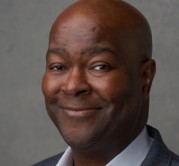4 ‘Cs’ and a ‘Big B’ for new CEOs who want an ‘A’

A little over six months have passed since I started as CUES’ president/CEO. I can sincerely say that being CEO is different from any job I’ve had previously. Notably, being CEO has an incredible variety of responsibilities, and is a very public role.
Being the new CEO of CUES runs many parallels to being the new CEO of a credit union. The job includes developing and communicating your vision and strategic plan; living and breathing organizational culture; making sure the financial and staff resources are in place to accomplish the strategic plan; being an effective decision-maker; and—of course—delivering results.
I think new CEOs can help their organizations realize their visions by having a deep understanding of the landscape as defined by four “Cs”—and by working well with the “Big B.”
Let’s take a look as these in more detail.
- Company. CUES has been around for more than 50 years, partnering with credit union leaders to meet their talent development needs. As the world of credit unions evolves, CUES must evolve with it. That’s why we’re leveraging our proven track record of partnering with world-class business schools to launch the Mergers & Acquisitions Institute this June, and continuing to offer our new Strategic Innovation Institutes I and II. What is your credit union’s history and culture? How does it work now? How will its history support where it is headed?
- For both CUES and credit unions, “customers” translates to members. CUES’ 14,000 members worldwide are concentrated heavily in the United States and Canada and composed of executives, board members and emerging leaders. While non-members can attend our learning events and programs, members get such special benefits as members-only articles on the new myCUES App and the ability to log their professional development endeavors (as well as those of their teams) using CUES Learning Tracker. Who are your members? What are you delivering to them? How satisfied are they with your services? How loyal are they to you?
- Professional learning is a very competitive space. CUES has an opportunity to stand out by being the only group that’s 100 percent focused on talent development within the CU industry. Who are your competitors? What are their offerings? How do they position themselves? How will you stand out?
- The talent development industry in which CUES operates is growing and evolving. Learning has traditionally been done face to face, but today online learning–such as CUES Director Education Center and the Center for Credit Union Board Excellence—is growing more prevalent and popular. Plus, credit union leaders need to learn about new topics and gain expertise in new areas. What do you know about the credit union world? The impact of the economy on your organization? The evolution of branch marketing in financial services? Members’ expectations of the experience they’ll have with you? The payments landscape? The need for cybersecurity? Knowing the trends and challenges will help you know your niche.
You can get to vision by having a deep understanding of the four Cs, but a new (or experienced) CEO isn’t going to succeed without a great relationship with the “Big B,” and that’s the board. There is a difference between participating in board meetings as a member of management versus partnering with your board as CEO. New CEOs make a transition from having one boss to having a group of directors oversee their work. What is important is to gain alignment, something CUES Symposium: A CEO/Chairman Exchange, taking place later this month, is specifically designed to support.
Without question, there is no job like the CEO post. New and long-time CEOs will benefit from preparing to lead down the challenging road ahead.





